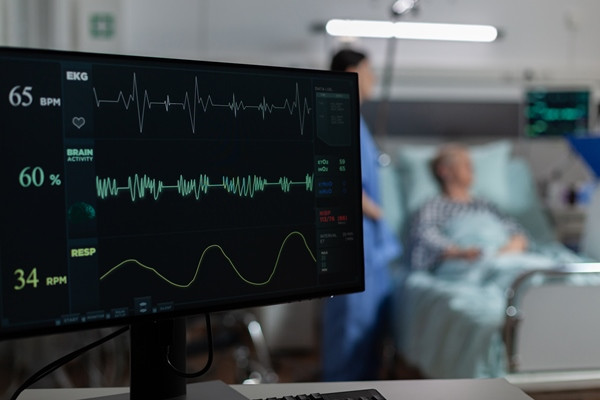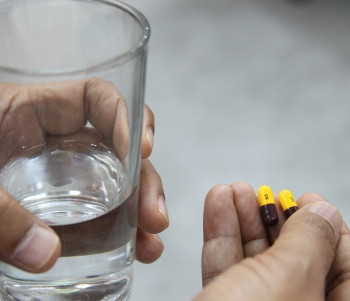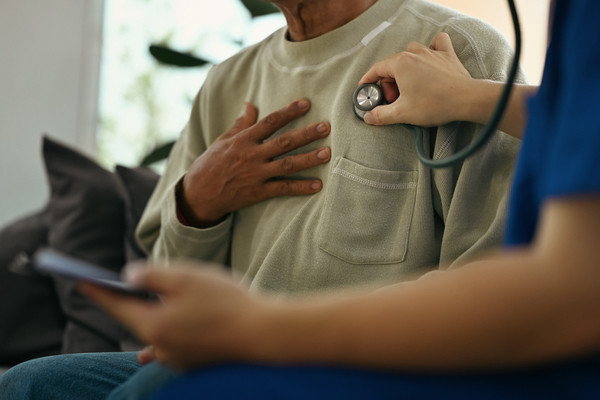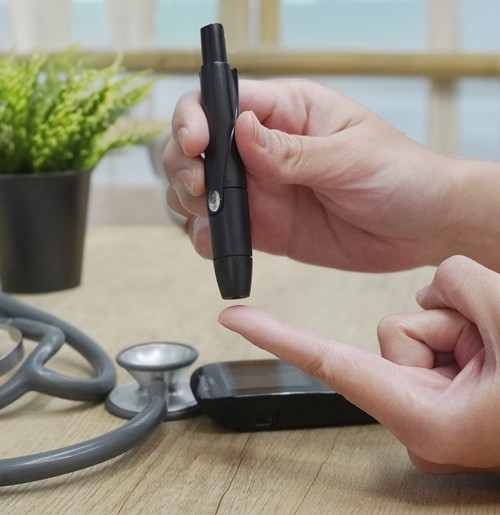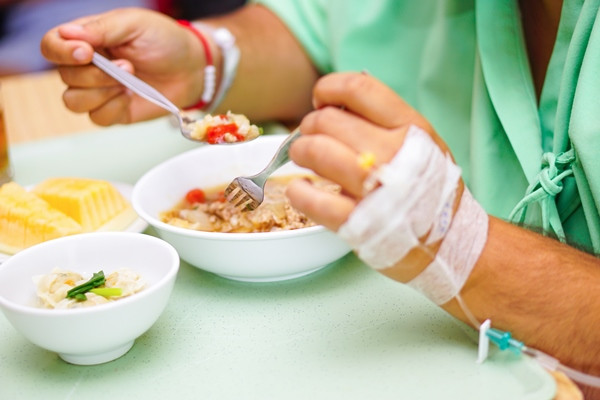Nyeri Neuropati Diabetik
Pendahuluan dan Fakta
Nyeri neuropati diabetik (NND) merupakan salah satu komplikasi dari diabetes melitus dan sangat mengganggu aktivitas penderita sehari-hari. Selain itu NND sangat sulit diobati dan seringkali membuat frustasi baik pasien maupun dokternya. Patofisiologi NND masih belum sepenuhnya diketahui, sehingga kondisi patologiknya belum dapat ditangani secara tuntas
Neuropati diabetik dijumpai pada 50 % pasien diabetes melitus, edangkan NND terjadi pada 16-26 % dari total pasien diabetes melitus. Neuropati diabetik paling sering terjadi pada DM tipe II. Sekitar 10% pasien mengeluhkan gejala neuropati saat awal ditegakkannya penyakit DM.
Patofisiologi
Mekanisme NND sangat kompleks dan belum sepenuhnya diketahui. Diduga melalui 2 mekanisme yaitu mekanisme perifer dan sentral. Mekanisme perifer meliputi: 1). Aktivitas ektopik, 2). Sensitisasi nosiseptor, 3). Interaksi abnormal antar serabut saraf, 4). Sensitivitas terhadap katekolamin, sedangkan mekanisme sentral meliputi: 1). Sensitisasi sentral, 2). Reorganisasi sentral, 3). Hilangnya kontrol inhibisi. Sampai sekarang belum diketahui dengan jelas kenapa satu pasien DM menderita NND sedangkan pasien DM lainnya tidak menderita NND
Sebuah penelitian mendapatkan kadar TNF-a, ekspresi iNOS dan TNF-a memiliki hubungan yang signifikan secara statistik terhadap derajat nyeri pada penderita NND. Kadar TNF-a, ekspresi TNF-a, dan ekspresi iNOS merupakan faktor risiko penting untuk terjadinya NND. Sedangkan umur, jenis kelamin, lama menderita DM, gula darah puasa, gula darah 2 jam postprandial, kadar HbA1c, tidak berhubungan dengan kejadian NND dan tidak sebagai faktor risiko terjadinya NND
Gejala Klinis dan Komplikasi
Manifestasi klinis NND terutama dijumpai pada anggota gerak bawah secara simetris, berupa rasa seperti terbakar, ditusuk, ditikam, kesetrum, disobek, tegang, diikat, alodinia, hiperalgesia dan disestesia. Keluhan dapat disertai rasa baal seperti pakai sarung tangan, hilang keseimbangan ( mata tertutup), kurang tangkas, astereognosis atau borok tanpa nyeri. Keluhan akan memberat pada malam hari sehingga tidak jarang pasien mengalami gangguan tidur, cemas dan depresi yang mengakibatkan kualitas hidup menurun
Diagnosis
Hiperglikemia kronik akibat DM yang tidak terkontrol akan menyebabkan disfungsi saraf perifer dan distribusinya umumnya bilateral simetris meliputi gangguan sensorik, motorik maupun otonom. Distribusi NND menyerupai gambaran kaos kaki dan sarung tangan (stocking and gloves) atau disebut juga Distal Symetrical Polyneuropathy
Diagnosis NND ini didapat dari proses anamnesis dengan keluhan seperti di atas.
Motorik : gangguan koordinasi serta paresis distal dan atau proksimal antara lain sulit naik tangga, sulit bangkit dari kursi/lantai, terjatuh, sulit bekerja atau mengangkat lengan atas diatas bahu, gerakan halus tangan terganggu, sulit putar kunci, buka toples, ibu jari tertekuk, tersandung, kedua kaki bertabrakan
Otonom : gangguan berkeringat, sensasi melayang pada posisi tegak, sinkope saat BAB/batuk/kegiatan fisik, disfungsi ereksi, sulit orgasme, sulit menahan bab/bak, ngompol, anyang-anyangan (polakisuri), muntah (bila makanan tertahan), mencret noktural, konstipasi. Gangguan pupil bisa berupa sulit adaptasi dalam gelap atau terang
Juga beberapa alat ukur yang dapat digunakan untuk membantu membedakan antara nyeri neuropatik dengan nyeri nosiseptif. Rekomendasi The American Diabetes Association Consensus Statement, diagnosis NND praktisnya ditegakkan berdasarkan klinis pasien seperti deskripsi dari nyeri yang dirasakan pasien, gejala yang bersifat distal symmetrical dan terjadi eksaserbasi pada malam hari
Pemeriksaan fisik
Inspeksi: Kaki diabetik, neuroartropati (Charcot joint) dan deformitas claw toe.
Pemeriksaan neurologik: Pemeriksaan motorik dan Pemeriksaan sensorik untuk melihat distribusi lesi saraf. Pemeriksaan otonom, termasuk: evaluasi hipotensi ortostatik, nadi ( refleks takikardi), tes Valsalva dan kelenjar keringat.
Pemeriksaan penunjang
Pemeriksaan elektrofisiologik
1. Motorik: latensi Nerve Conduction Velocity (NVC), F-wave, Electromyography (EMG), MagneticEvoked Potensial (MEP).
2. Sensorik : Sensory Nerve Action Potensial (SNAP), Sensory Conduction Velocity (SCV), H-reflex, Somato Sensory Evoked Potensial (SSEP), Laser-evoked potentials (LEPs), Positron Emission Tomography (PET), Small Fibers Nerve Conduction Velocity (pemeriksaan small fiber).
3. Quantitative Sensory Testing (QST). Merupakan pengukuran psikofisiologis dari persepsi pada rangsangan eksternal yang intensitasnya terkontrol/diatur.Dipakai serabut Von Frey atau Semmes-Weinstein monofilaments. Dapat dipakai untuk menilai rasa raba dari serabut-serabut saraf Aß yang cukup bermanfaat sebagai sarana diagnosis dini dari neuropati
diabetik
Laboratorium:
- Kadar gula darah atau tes toleransi glukosa, HbA1c.
- Laboratorium untuk menyingkirkan diagnosis banding atau penapisan dini kasus subklinis.
Dalam Textbook of Diabetic Neuropathy, Dyck merekomendasikan diagnosis NND apabila terdapat minimum satu atau 2 abnormalitas (dari keluhan, gejala klinis, abnormalitas pada pemeriksaan hantaran saraf (NCV) atau pemeriksaan sensori kuantitatif (quantitative sensory tests)
Tatalaksana dan Perawatan
Penatalaksanaan NND terdiri dari beberapa strategi, antara lain tindakan pencegahan, pengendalian glukosa, modifikasi pola makan, penurunan berat badan, dan pengendalian nyeri. Banyak pasien dengan neuropati memiliki gejala mati rasa ringan hingga sedang namun tetap merasakan sensasi perlindungan di kaki mereka. Pasien mungkin hanya memerlukan kepastian dan edukasi mengenai penyebab mati rasa tersebut. Tindak lanjut secara berkala sangat penting. Penyakit arteri perifer dan radikulopati harus disingkirkan. Dengan peningkatan kontrol glikemik, parestesia dan disestesia dapat berkurang dalam waktu satu tahun. Pada tahun 2022, Current Pain and Headache Reports mengusulkan algoritma pengobatan untuk neuropati diabetik yang nyeri. Algoritme ini dibagi menjadi terapi konservatif, farmakologis, dan intervensi, yang disubkategorikan menjadi pengobatan lini pertama, kedua, dan ketiga.
- Pengendalian optimal kadar gula darah: sebaiknya mendekati normoglikemia, harus dijaga kadar HbA1c dipertahankan dibawah 6-7% .
- Terapi simtomatik
Farmakologik:
- Anti konvulsan antara lain : pregabalin, gabapentin, karbamasepin, okskarbasepin.
- NSAID: untuk nyeri muskuloskeletal dan neuroartropati.
- Analgesik: tramadol, kombinasi tramadol dan asetaminofen.
- Antidepresan antara lain: amitriptilin, imipramin, duloksetin.
- Antiaritmia: meksiletin.
- Obat topikal antara lain: kapsaisin.
Non-farmakologik
Perawatan harian kaki secara teliti.
- Sepatu: jangan sempit, diperiksa adanya tonjolan di dalam sepatu.
- Infeksi lokal di terapi dan berat badan diturunkan.
- Nyeri kaki: rendam kaki dalam air panas-dingin bergantian selama 10 menit (cek suhu air panas) .(Callaghan et a.l, 2012).
- Terapi alternatif seperti: akupunktur, infrared, laser terapi, TENS, frequencymodulated electromagnetic neural stimulation (FREMS) therapy, high frequency external muscle stimulation, electrical spinal cord stimulator inplantasimasih belum konklusif
Invasif non-bedah, berupa blok saraf lokal.
Tindakan pmbedahan, atas indikasi seperti amputasi pada gangren.
Referensi:
- Widyadharma IPE. Nyeri polineuropati diabetik. Pain Education Pustaka Bangsa Press. [Internet]. [Cited 26/8/2021]. Available from: https://www.researchgate.net/publication/320584600_Nyeri_Polineuropati_Diabetik
- Bodman MA, Dreyer MA, Varacallo M. Diabetic peripheral neuropathy [Internet]. 2024. Available from: https://www.ncbi.nlm.nih.gov/books/NBK442009/





